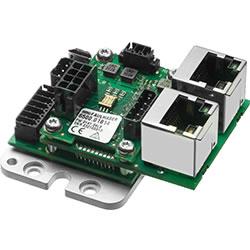How Manufacturers Can Develop Efficient Pump Designs Using CFD
The fiercely competitive market, where customer demands shift consistently and environmental challenges keep on growing, product manufacturing businesses are facing extreme pressure on improving product efficiency and usefulness.
The fiercely competitive market, where customer demands shift consistently and environmental challenges keep on growing, product manufacturing businesses are facing extreme pressure on improving product efficiency and usefulness.
Best-in-class companies consider revamping their existing product lines or develop completely new products from scratch to meet these challenges, and this is very much evident in case of pump and fan manufacturing industry. As an example, new pump efficiency standards from the U.S. Department of Energy require todays least-efficient 25% of the pumps to be redesigned to conserve energy.
Moreover, by 2023, the new rooftop air conditioning standards require increasing the efficiency of pumps by at least 25% to save electricity. As such, manufacturers are consistently seeking for innovation to improve the efficiency of pumping devices.
For a manufacturer, innovation is not in optimizing the design even at component level, as these opportunities are already being taken care of. To improve the efficiency, engineers need to take a step further from improving the performance of each component to improve the performance of system as a whole, where all the components operate in tandem with other components of the system.
Considering the new pump standards that require pumps to deal with variable flows efficiently, the change should not be brought in using control valves but to use a variable speed drive that helps in generating pump output according to the load requirements.
With this approach, the energy consumption can be lowered by as good as 50% or even more. However, with this change, there is a huge effect on the overall pump design and the challenging part of this for engineers would be to maintain a balance between tradeoffs like safety, durability, cost, performance and sustainability of the entire system. This challenge necessitates sound engineering experience in the design process and required several physical trials to validate the new design.
To perform all this without stretching the development schedule, simulation throughout the cycle is the only feasible option to achieve set goals efficiently. Simulation eliminates the limitations of physical tests that require replicating real world conditions cost-effectively and in a timely manner.
Pump manufacturers seeking to reduce power consumption, improve efficiency and reduce maintenance for their pumps need not to rely on time-consuming and costly physical tests to gather experimental data. Through simulation, they can evaluate multiple pump designs, compare them and validate them rapidly and cost effectively.
Impeller design for example can be improved significantly by performing CFD analysis to determine velocity streamlines and pressure drop for each different configuration or impeller blade profile. This will allow engineers to determine which profiles are not worthy to be used for physical tests and thus the design can be brought closer to reality.
The cost of developing a prototype and conducting experimental test trials is dramatically reduced, while ensuring that the objective of improving pump efficiency is achieved efficiently.
Featured Product

MOTION CONTROLLERS FOR MINIATURE DRIVES AND MICRODRIVES
FAULHABER has added another extremely compact Motion Controller without housing to its product range. The new Motion Controller is ideal for integration in equipment manufacturing and medical technology applications. With 36 V and 3 A (peak current 9 A), it covers the power range up to approx. 100 W and is suitable for DC-motors with encoder, brushless drives or linear motors.
